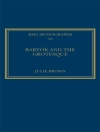Why are some of the most beloved and frequently performed works of the late-romantic period—Mahler, Delius, Debussy, Sibelius, Puccini—regarded by many critics as perhaps not quite of the first rank? Why has modernist discourse continued to brand these works as overly sentimental and emotionally self-indulgent? Peter Franklin takes a close and even-handed look at how and why late-romantic symphonies and operas steered a complex course between modernism and mass culture in the period leading up to the Second World War. The style’s continuing popularity and its domination of the film music idiom (via work by composers such as Max Steiner, Erich Wolfgang Korngold, and their successors) bring late-romantic music to thousands of listeners who have never set foot in a concert hall. Reclaiming Late-Romantic Music sheds new light on these often unfairly disparaged works and explores the historical dimension of their continuing role in the contemporary sound world.
Daftar Isi
List of Illustrations
Introduction
1. Setting the Scene: Grandiose Symphonics and the Trouble with Art
2. Pessimism, Ecstasy, and Distant Voices: Listening to Late-Romanticism
3. Sunsets, Sunrises, and Decadent Oceanics
4. Making the World Weep (More Problems with Opera)
5. Late-Romanticism Meets Classical Music at the Movies
6. The Bitter Truth of Modernism: A Late-Romantic Story
Notes
Index
Tentang Penulis
Peter Franklin is Professor of Music at the University of Oxford and a Fellow of St Catherine’s College. His books include Mahler: Symphony no.3 (1991), The Life of Mahler (1997), and Seeing Through Music: Gender and Modernism in Classic Hollywood Film Score (2011).












